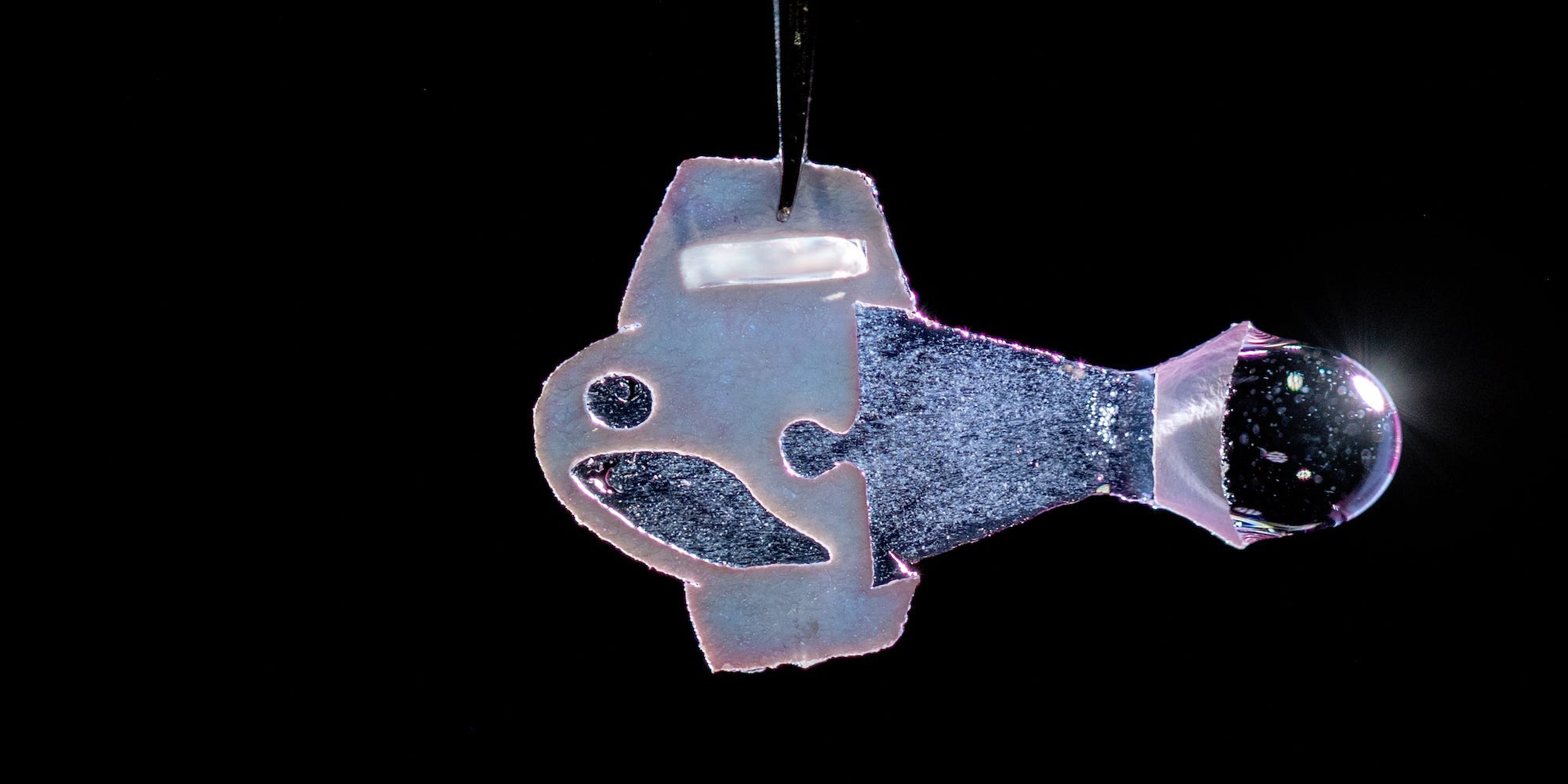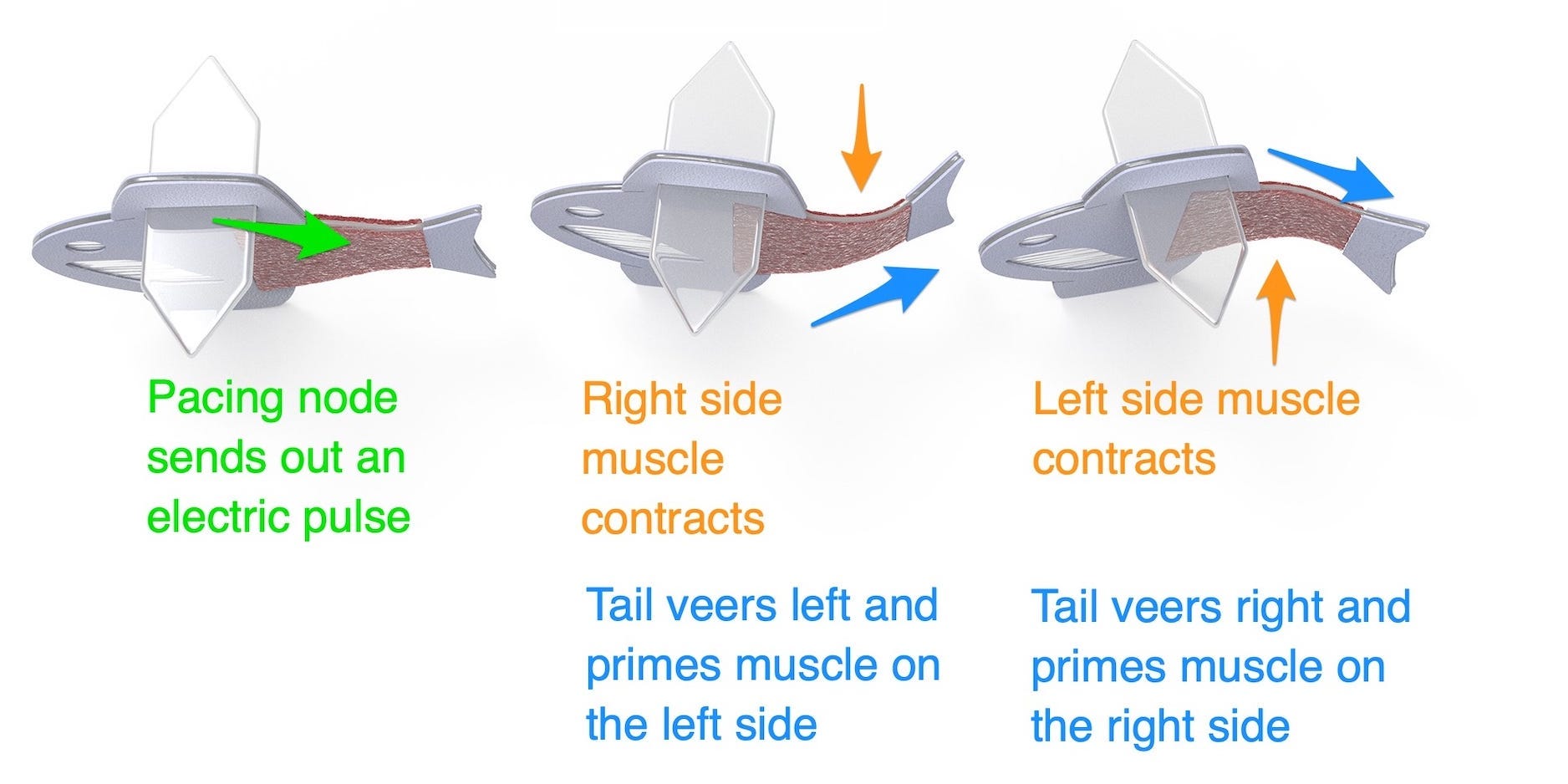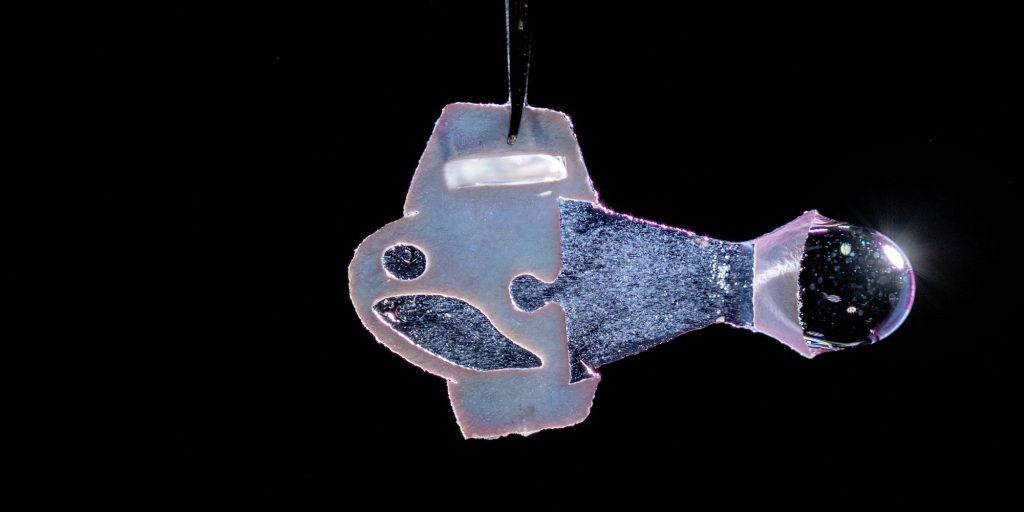
- Scientists made a fake fish out of human heart cells that can swim on its own.
- The experiment is a first step toward making artificial heart muscles work together in a lab.
- While the fish is a bioengineering feat, we're a long way from building an artificial human heart.
Scientists created a fake fish made out of human-heart muscle cells that can propel itself on its own. It could be the first step toward one day building a human heart from stem cells in a lab, according to a study published in Science on Thursday.
But outside experts say there are still immense challenges to overcome before that technology becomes feasible in the clinic.
This group of scientists has ventured into making bizarre animals out of cells before. Their previous work includes a robot stingray made of rat-heart cells.
While these projects might seem simply "fun and cool," these structures provide unique insight into the physical and mechanical properties of the heart muscles, Sung-Jin Park, assistant professor of biomedical engineering at Emory University and Georgia Tech and an author of the study, told Insider.
Bioengineers like Park want to design artificially made human tissue that works as well, or even better, than natural heart tissue, he said, meaning they could fix patients' hearts with their own cells.
"Our ultimate goal is to build an artificial heart to replace a malformed heart in a child," Kit Parker, a Harvard bioengineer at John A. Paulson School of Engineering and Applied Sciences and coauthor of the paper, said in a press release.
Scientists build a fish to study the human heart
The heart and the brain function almost independently from one another. A sequence of electrical signals triggers the heart muscles to contract in a staggered manner, to pump the blood through the heart, like in the video below.
But this team of scientists is less interested in trying to replicate the structure of a natural heart in a jar, and more interested in engineering a better version of the human heart, Park said.
In the study, they investigated whether they could use muscle-cell proteins to trigger a contraction. As a muscle stretches, pores on the surface of the muscle cells open, letting specific nutrients in. That signal is sometimes enough to trigger the muscle cells to contract on their own.
If two muscles are stacked on top of another, as one shortens, it elongates the other, which in turn can snap back, elongating the first muscle.
The researchers set out to see if they could create that effect using heart-muscle cells. The fake fish was made by lining up human-heart stem cells in two layers of muscles on opposite sides of the tail. Those muscles were then mounted on a plastic structure with fin-like protrusions, allowing the fish to be suspended in water.

By stacking the muscles together in that way, the fish's tail was able to move back and forth continuously for days, without external stimuli.
As the tail wagging weakened over time, the researchers added an autonomous pacing node to the fish, or a small structure that acts like a pacemaker, releasing regular electrical pulses into the system.
Using this setup, the fish could keep moving for more than 100 days without any external help.
Creating tissue that can pulse on its own is a first step toward one of the team's end goals: Making an artificial, self-pulsing muscle that could replace parts of the human heart that can not longer contract after a heart attack.
A beating artificial heart is a long way off
Michael Schneider, a professor of regenerative cardiology at Imperial College London, who was not involved in the study, told Insider the research was a technical feat.
But he warned that the technology is still a long way from being used in the clinic.
In the race to create the first definitive treatment for end-stage heart failure, Schneider thinks transplanting genetically altered pig hearts, an approach which was successfully done in a human for the first time this year, is more promising.
Park agrees that this experimental research is still in its infancy. It could be another decade, at least, before scientists are able to build an artificial muscle that could replace a human heart, he added.
But that doesn't mean his team's research should be discounted.
"I think that other methods will be faster than us," Park said. But in the long run, creating tissue that relies on the patient's own cells could offer unexpected benefits over pig organs or synthetic alternatives, he added.

